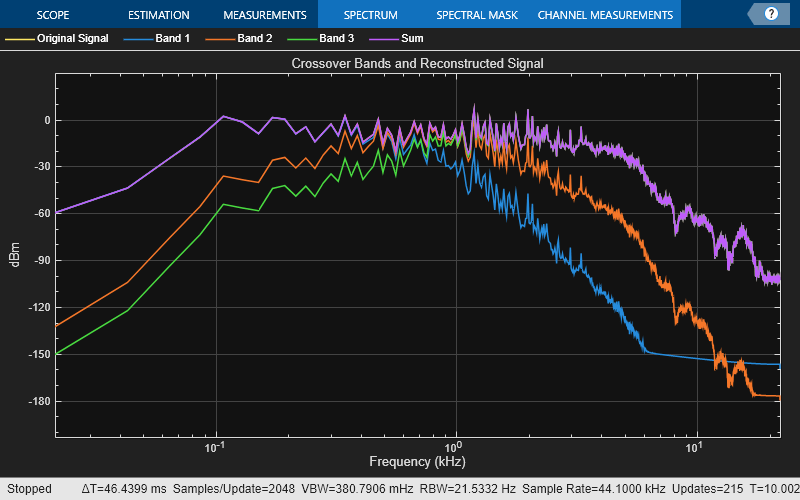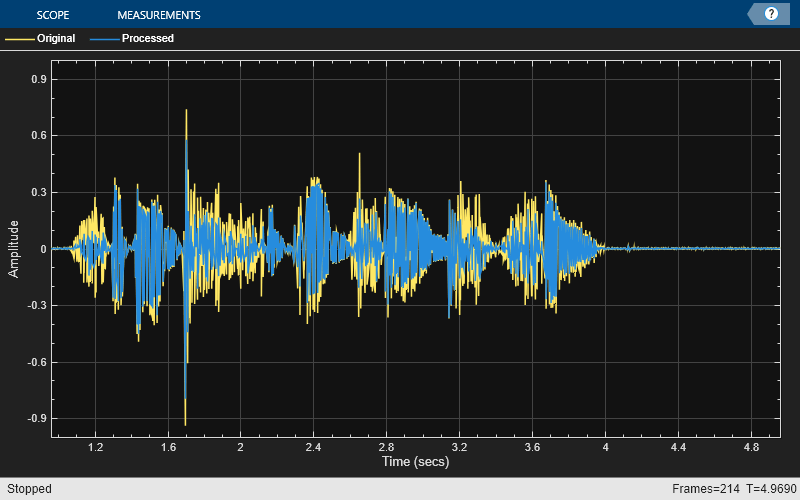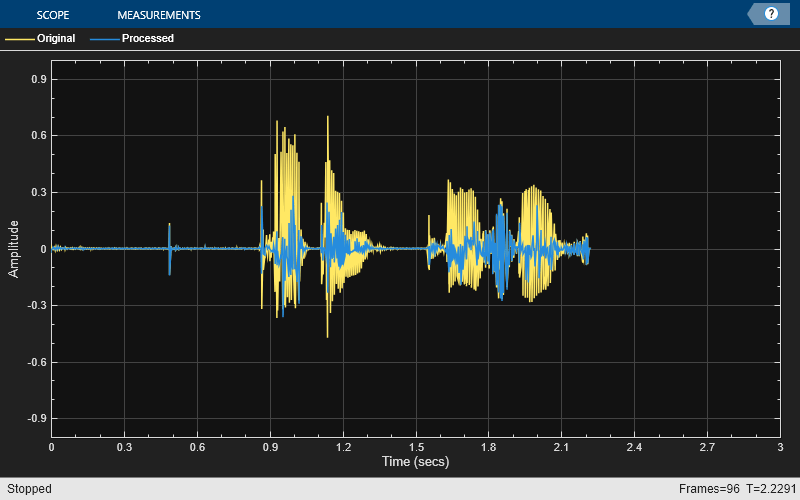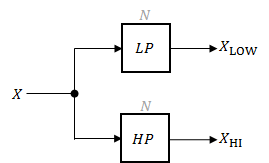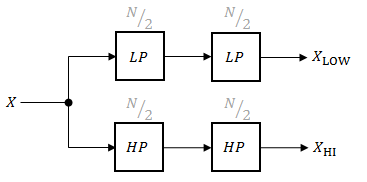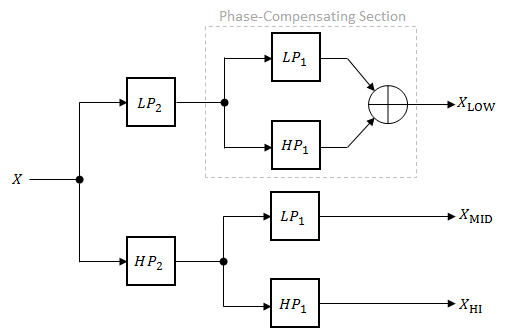crossoverFilter
Audio crossover filter
Description
The crossoverFilter
System object™ implements an audio crossover filter, which is used to split an audio signal
into two or more frequency bands. Crossover filters are multiband filters whose overall
magnitude frequency response is flat.

To implement an audio crossover filter:
Create the
crossoverFilterobject and set its properties.Call the object with arguments, as if it were a function.
To learn more about how System objects work, see What Are System Objects?
Creation
Syntax
Description
crossFilt = crossoverFilter creates a System object, crossFilt, that implements an audio crossover
filter.
crossFilt = crossoverFilter(
sets the NumCrossovers
property to nCrossovers)nCrossovers.
crossFilt = crossoverFilter(
sets the CrossoverFrequencies property to nCrossovers,xFrequencies)xFrequencies.
crossFilt = crossoverFilter(
sets the CrossoverSlopes property to nCrossovers,xFrequencies,xSlopes)xSlopes.
crossFilt = crossoverFilter(
sets the SampleRate
property to nCrossovers,xFrequencies,xSlopes,Fs)Fs.
crossFilt = crossoverFilter(___,
sets each property Name,Value)Name to the specified Value.
Unspecified properties have default values.
Example: crossFilt =
crossoverFilter(2,'CrossoverFrequencies',[100,800],'CrossoverSlopes',[6,48])
creates a System object, crossFilt, with two crossovers located at 100 Hz and 800
Hz, and crossover slopes of 6 dB/octave and 48 dB/octave, respectively.
Properties
Usage
Description
[band1,...,bandN] =
crossFilt(audioIn)audioIn, and returns the
filtered output bands, [band1,...,bandN], where N =
.NumCrossovers + 1
Input Arguments
Output Arguments
Object Functions
To use an object function, specify the
System object as the first input argument. For
example, to release system resources of a System object named obj, use
this syntax:
release(obj)
The createAudioPluginClass and configureMIDI
functions map tunable properties of the crossoverFilter
System object to user-facing parameters:
| Property | Range | Mapping | Unit |
|---|---|---|---|
CrossoverFrequencies | [20, 20000] | linear | Hz |
CrossoverSlopes | [6, 48] | linear | dB/octave |
Examples
Algorithms
References
[1] D’Appolito, Joseph A. "Active Realization of Multiway All-Pass Crossover Systems." Journal of Audio Engineering Society. Vol. 35, Issue 4, 1987, pp. 239–245.



